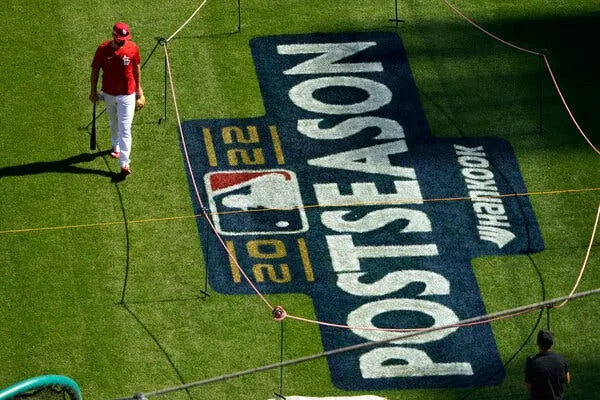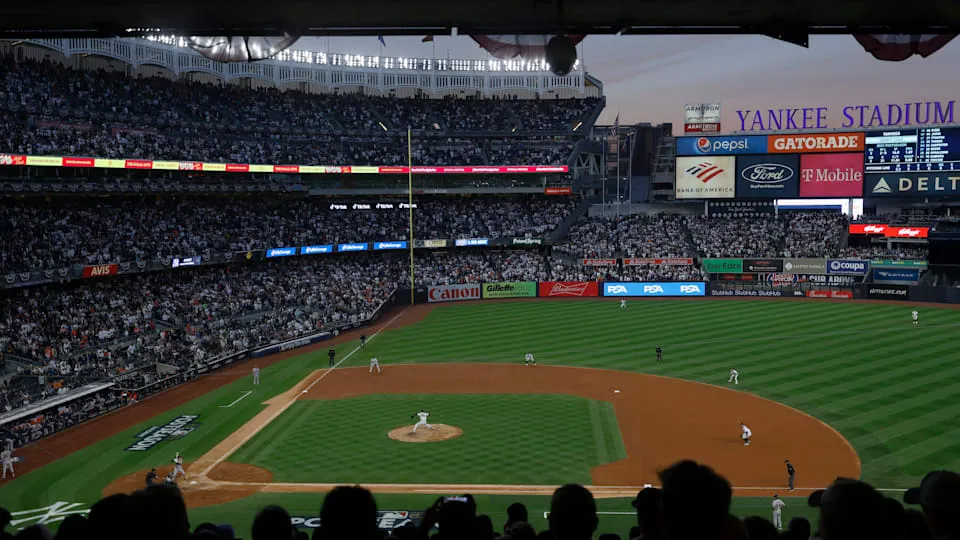
How Many Games Are in an MLB Season A Comprehensive Guide
The Major League Baseball (MLB) season is an exciting time for baseball fans everywhere. From the intense rivalries to the nail-biting games, it’s no wonder why people eagerly anticipate the start of each season. However, have you ever wondered just how many games are actually played in an MLB season? In this guide, we’ll break down all the key information you need to know about the number of games in an MLB season.

The Basics of the MLB Season
Before delving into the specifics of how many games are in an MLB season, let’s first understand the basics of the league and its structure. The MLB consists of two leagues – the National League (NL) and the American League (AL) – with 15 teams in each league. Each league is further divided into three divisions – East, Central, and West – with five teams in each division.
The MLB regular season runs from late March or early April to late September, totaling around six months. During this time, each team plays a total of 162 games, with a mix of home and away games. This means that there are a massive 2,430 regular-season games played in the MLB every year!
Now, let’s dive deeper into the specifics of the MLB season and its games.
Understanding the Divisional Structure
As mentioned earlier, both the NL and AL consist of three divisions each. Each division has five teams, with a total of 15 teams in each league. The NL and AL divisions are as follows:
National League:
- East Division: Atlanta Braves, Miami Marlins, New York Mets, Philadelphia Phillies, Washington Nationals
- Central Division: Chicago Cubs, Cincinnati Reds, Milwaukee Brewers, Pittsburgh Pirates, St. Louis Cardinals
- West Division: Arizona Diamondbacks, Colorado Rockies, Los Angeles Dodgers, San Diego Padres, San Francisco Giants
American League:
- East Division: Baltimore Orioles, Boston Red Sox, New York Yankees, Tampa Bay Rays, Toronto Blue Jays
- Central Division: Chicago White Sox, Cleveland Indians, Detroit Tigers, Kansas City Royals, Minnesota Twins
- West Division: Houston Astros, Los Angeles Angels, Oakland Athletics, Seattle Mariners, Texas Rangers
The divisional structure is important because it determines who a team plays the most games against in a season. As each team plays 162 games, they play 19 games against each of their division rivals (a total of 76 games). This makes up almost one-third of their entire schedule.
How Many Games are Played Against Other Teams?
Apart from playing 76 games against their division rivals, each team also plays games against teams from other divisions within their league, as well as against teams from the opposite league. Here’s how the breakdown looks:
- Each team plays six or seven games against each team from the other two divisions in their league. This adds up to 66 games.
- Additionally, each team plays interleague games against four teams from a specific division in the opposite league. For example, a team from the NL East may play four games each against four AL Central teams. This adds up to another 20 games.
This brings the total number of games for each team to 162, with an equal number of home and away games.
The Role of Wild Card Games and Postseason

You may have noticed that the total number of games played by each team in the MLB regular season does not add up to 2,430 (the total number of games in the season). This is because there are additional games that take place after the regular season.
In recent years, the MLB has introduced wild card games, which are essentially playoff games that determine which team advances to the postseason. In each league, the top two teams with the best records (excluding division winners) play a one-game playoff to determine who moves on to the postseason. This adds two more games to each league’s schedule, bringing the total number of games to 2,434.
Once the wild card games are played, the top team in each division and the winner of the wild card game in each league move on to the postseason. The playoffs consist of three rounds – the Division Series, the Championship Series, and the World Series.
In the Division Series, the top team in each division plays against the winner of the wild card game, while the other two division winners face each other. The winners then advance to the Championship Series, followed by the World Series, where the champions of the NL and AL compete for the Commissioner’s Trophy. Each round consists of a best-of-five or best-of-seven series, adding more games to the overall season tally.
How Does the Number of Games Compare to Other Sports?
To put things into perspective, let’s take a look at how the number of games in an MLB season compares to other major sports leagues in North America.
- NBA: Teams play 82 regular-season games.
- NHL: Teams play 82 regular-season games.
- NFL: Teams play 16 regular-season games.
- MLS: Teams play 34 regular-season games.
As you can see, the MLB has the longest regular season out of all the major sports leagues in North America. This makes sense considering the sheer number of teams in the league and the number of games they play against each other.
Factors Affecting the Number of Games in an MLB Season

Now that we have established the basics of the MLB season and its structure, let’s take a look at some key factors that may impact the number of games played in a season.
Weather:
One of the most significant factors affecting the number of games in an MLB season is the weather. As baseball is primarily played outdoors, extreme weather conditions may lead to game cancellations or postponements. This can significantly impact the schedule and lead to the need for doubleheaders (two games played in one day) to make up for lost games.
Player Safety:
Player safety is also a crucial factor that the MLB takes into consideration when determining the number of games in a season. With a long regular season and intense postseason, players are at risk of injuries due to overuse. Additionally, with games played almost every single day, players may not get enough rest, which can impact their performance and increase the likelihood of injuries.
To combat these issues, the MLB has implemented “off-days” during the regular season where no games are scheduled, giving players time for rest and recovery.
Television Broadcast Agreements:
Television broadcast agreements play a significant role in determining the number of games played in an MLB season. The league has lucrative deals with major television networks, which include airing a certain number of games per season. This means that even if there are potential weather-related or player safety concerns, the league may still prioritize fulfilling its broadcast obligations.
The Impact of COVID-19 on the Number of Games
The 2020 MLB season was unlike any other due to the global COVID-19 pandemic. The regular season was reduced from 162 games to 60 games, with a different scheduling format. The traditional divisional structure was altered, and teams only played against opponents within their division to minimize travel and potential exposure to the virus.
While this was a necessary move to ensure the safety of players, staff, and fans, it also impacted the overall number of games played in a season. However, as things slowly return to normal, the 2021 season saw a return to the traditional 162-game schedule, providing fans with a full season of exciting baseball once again.
Conclusion
In conclusion, the answer to the question “How many games are in an MLB season?” is 2,430 for the regular season and anywhere from 2,436 to 2,447 when you include the postseason. With a long regular season and an intense postseason, the MLB provides fans with ample opportunities to cheer on their favorite teams and players.
From the divisional structure to the impact of external factors like weather and television broadcast agreements, there are various elements that go into determining the number of games played in an MLB season. As baseball continues to evolve, the league may make changes to its structure and scheduling, but one thing is for sure – the passion and excitement of the game will remain unchanged.


